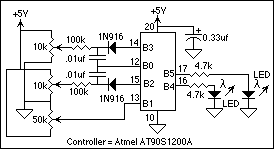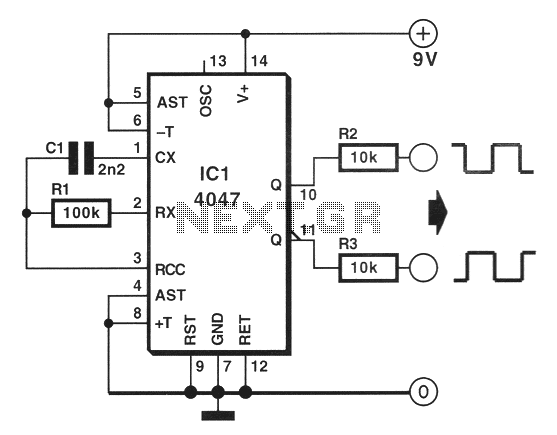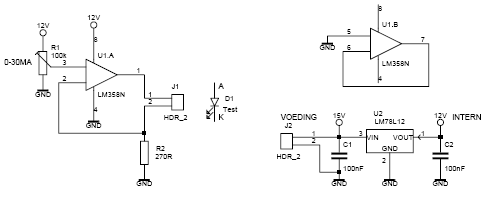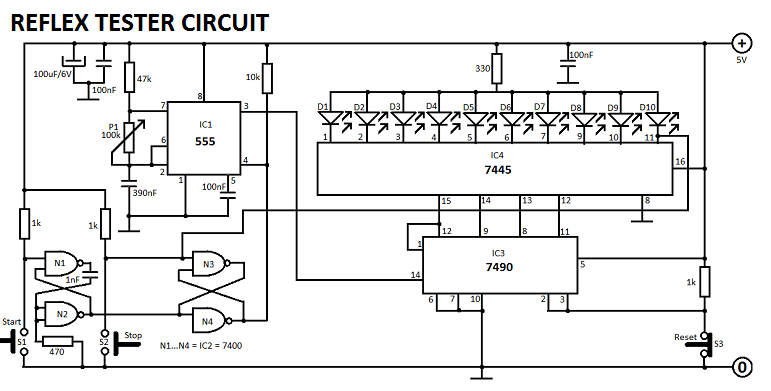
Multiple Continuity Tester
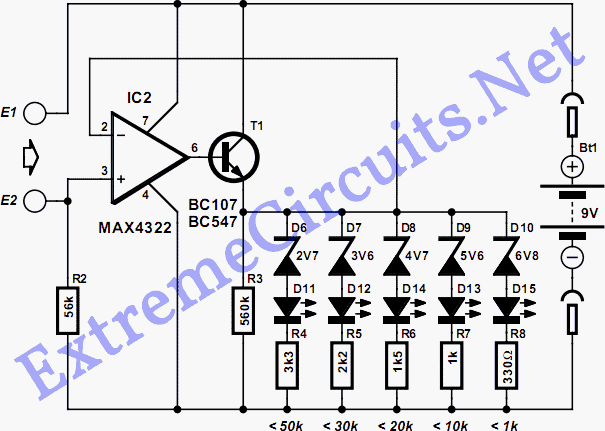
The continuity tester is a useful accessory to an ohmmeter. The unit or component whose continuity is to be checked is connected between terminals E1 and E2.
A continuity tester is an essential tool in electronics for verifying the integrity of electrical connections. It operates by applying a small voltage across the terminals E1 and E2, with the component or circuit segment under test connected in between. If the connection is intact, current flows through the circuit, indicating continuity, often signaled by an audible beep or a visual indicator such as an LED light.
The design of a continuity tester typically includes a power source, often a battery, which provides the necessary voltage for testing. The circuit includes a resistor to limit the current and protect sensitive components. Additionally, an indicator circuit, which may consist of an LED and a current-limiting resistor, is employed to visually confirm the presence of continuity.
In practical applications, the continuity tester can be used to check for open circuits, verify connections in wiring, and troubleshoot faults in electronic devices. It is particularly useful in ensuring that all components in a circuit are properly connected before powering the system. The simplicity and effectiveness of a continuity tester make it a vital instrument for both professional technicians and hobbyists in the field of electronics.The continuity tester is a handy adjunct to an ohmmeter. The unit or component whose continuity is to be checked is connected between terminals E1 and E2.. 🔗 External reference
A continuity tester is an essential tool in electronics for verifying the integrity of electrical connections. It operates by applying a small voltage across the terminals E1 and E2, with the component or circuit segment under test connected in between. If the connection is intact, current flows through the circuit, indicating continuity, often signaled by an audible beep or a visual indicator such as an LED light.
The design of a continuity tester typically includes a power source, often a battery, which provides the necessary voltage for testing. The circuit includes a resistor to limit the current and protect sensitive components. Additionally, an indicator circuit, which may consist of an LED and a current-limiting resistor, is employed to visually confirm the presence of continuity.
In practical applications, the continuity tester can be used to check for open circuits, verify connections in wiring, and troubleshoot faults in electronic devices. It is particularly useful in ensuring that all components in a circuit are properly connected before powering the system. The simplicity and effectiveness of a continuity tester make it a vital instrument for both professional technicians and hobbyists in the field of electronics.The continuity tester is a handy adjunct to an ohmmeter. The unit or component whose continuity is to be checked is connected between terminals E1 and E2.. 🔗 External reference
